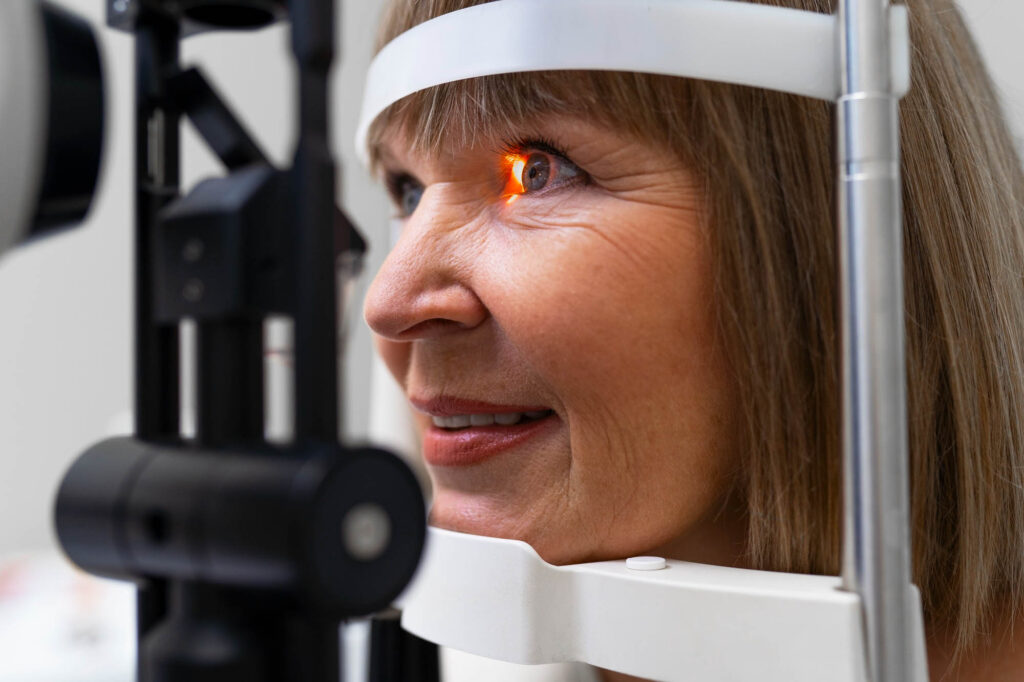
Cataracts are a common eye condition that affects millions of people worldwide. In this comprehensive guide, we will explore the causes, symptoms, and risk factors associated with cataracts. By understanding these aspects of the condition, you can take the necessary steps to protect your vision and seek appropriate treatment when needed.
What Causes Cataracts?
Cataracts occur when the natural lens of your eye becomes cloudy, leading to a decrease in vision quality. The primary cause of cataracts is the natural aging process, which causes proteins in the lens to clump together and form cloudy areas. However, other risk factors can contribute to the development of cataracts, such as family history of cataracts, high blood pressure, exposure to ultraviolet radiation from the sun, smoking, diabetes, and certain medications like corticosteroids.

Recognizing the Symptoms of Cataracts
Cataracts can cause a variety of symptoms that can significantly impact your vision. They do not cause pain but as they progress over time, they cause steady loss of vision. Common symptoms include blurry or hazy vision, difficulty seeing in dim light, the appearance of glare and halos around lights, and a noticeable decrease in color perception. These visual effects can have a significant impact on your daily life and should not be ignored. If you experience any of these symptoms, it is essential to consult with one of CLEI’s eye care professionals for a proper diagnosis and treatment plan.
What Do Cataracts Look Like?
Cataracts can have different appearances depending on their severity and location within the lens. In the early stages, they may appear as small cloudy spots that gradually grow larger over time. As the cataracts progress, the entire lens may become cloudy, yellow, and opacified, leading to significant vision impairment. Understanding what cataracts look like can help you recognize the condition and seek appropriate treatment.

Cataract Testing and Diagnosis
If you suspect you have cataracts, our eye care professionals will perform a thorough examination to confirm the diagnosis. The examination may include a visual acuity test to measure your vision at various distances, a slit-lamp examination to examine the structures of your eye, and a dilated eye exam to assess the condition of your lens. These tests will help determine the severity of your cataracts and guide your treatment options.
Cataracts vs. Glaucoma: Understanding the Differences
While cataracts and glaucoma are both eye conditions that can cause vision loss, they are distinct in nature. Cataracts occur when the lens of the eye becomes cloudy, while glaucoma is characterized by damage to the optic nerve, usually due to increased pressure within the eye. Understanding the differences between these conditions is crucial for proper diagnosis and treatment.
Congenital Cataracts: Causes and Treatment Options
Congenital cataracts are cataracts that are present at birth or develop shortly after. They can be caused by genetic factors, infections during pregnancy, or trauma to the eye. Treatment for congenital cataracts usually involves surgery to remove the cloudy lens and replace it with an artificial lens. Early detection and intervention are vital for the best possible outcomes.
Treating Cataracts: Cataract Surgery Explained
Cataract surgery is currently the only option for treating cataracts. Happily, it’s extremely effective. It’s worth noting that cataract surgery is generally an elective procedure. If your vision is still adequate for driving safely, reading and carrying out other daily activities, you may not need surgery right away. When your vision does become significantly impaired, your eye doctor may suggest cataract surgery, but keep in mind that cataract surgery doesn’t correct other issues that cause decreased vision. Some of these conditions might include diabetes, glaucoma, or age-related macular degeneration.
CLEI’s highly experienced optometrists and ophthalmologists can determine whether or not cataract surgery is a good option for your particular case. If you are eligible for vision correction with cataract surgery, you can rest assured that CLEI uses the latest innovations in cataract surgery for the best possible outcomes. How does it work?
Cataract surgery involves removing the cloudy lens and replacing it with an artificial lens called an intraocular lens (IOL). We perform premium femtosecond laser-assisted cataract surgery (FLACS), which is entirely comfortable and extremely precise. During the procedure, your eye is numbed with drops and a small incision is made in the cornea. Next, we use a process called phacoemulsification to remove the cloudy lens. Phacoemulsification utilizes a small ultrasound device to break up the natural lens. The resulting tiny fragments are then gently aspirated out of the eye. Then, a permanent artificial lens, called an intraocular lens (IOL) is implanted into your eye, and the incision is usually closed without any stitches. The type of IOL used in your procedure will depend on your specific vision correction needs, but there are several options available, including Light Adjustable Lenses (LAL), trifocal lenses, and extended depth of focus lenses which can correct distance, intermediate, and near vision to variable degrees after surgery.
Conclusion: Taking the Next Steps for Clear Vision
Understanding cataracts, their causes, symptoms, and treatment options is crucial for maintaining clear vision. If you suspect you have cataracts or are experiencing any vision changes, don’t hesitate to schedule a complimentary cataract evaluation appointment with us.
With the advancements in cataract surgery techniques and technology, clear vision is within reach for those affected by cataracts. Take the next steps towards improving your vision and enhancing your quality of life.




